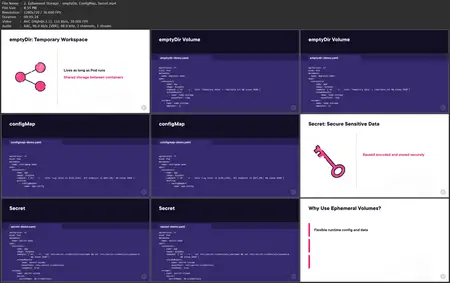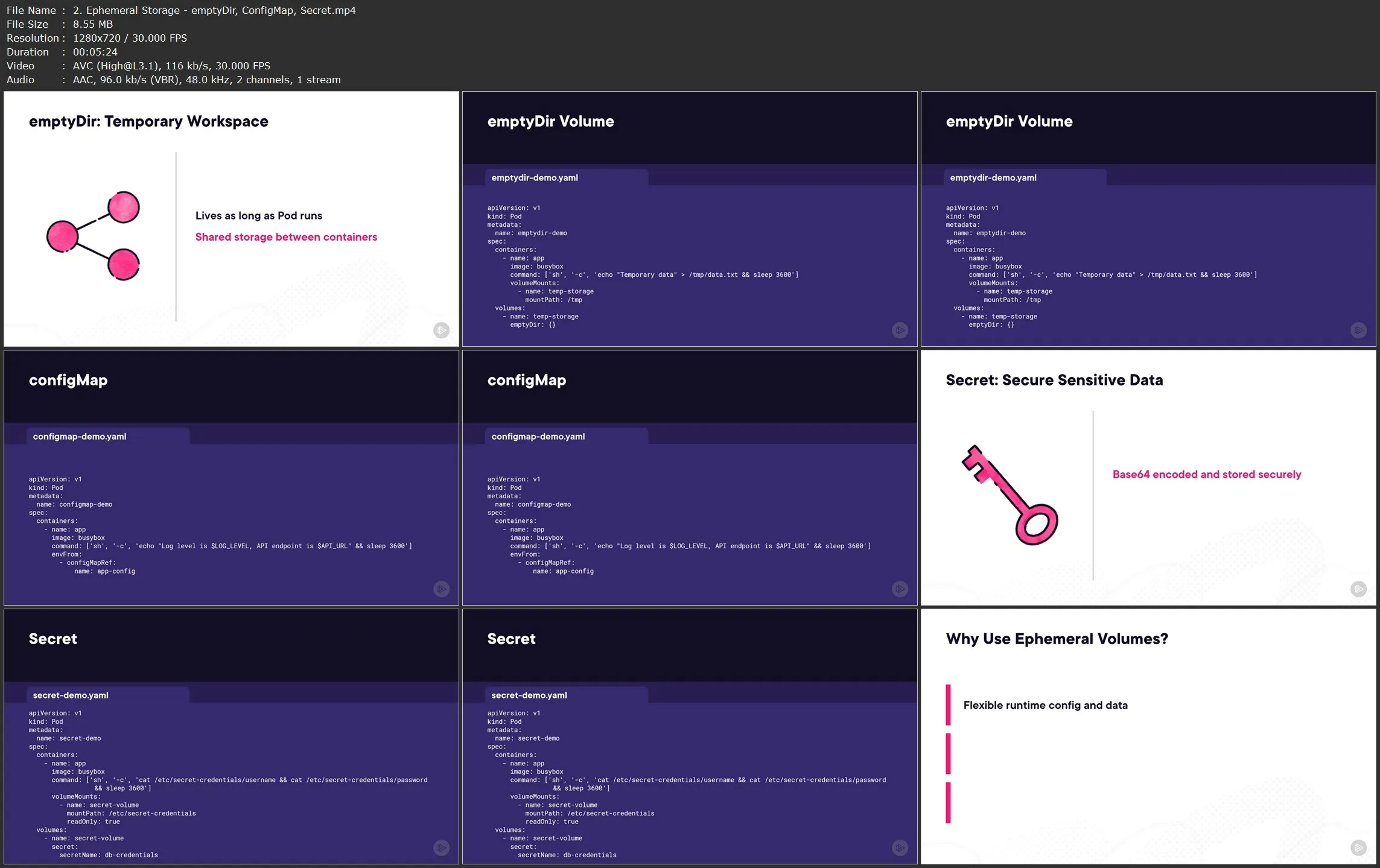Kubernetes for Software Development: Integrating Volumes and Using Multi-container Pods
.MP4, AVC, 1280x720, 30 fps | English, AAC, 2 Ch | 1h 28m | 163 MB
Instructor: Patrick Rusch
.MP4, AVC, 1280x720, 30 fps | English, AAC, 2 Ch | 1h 28m | 163 MB
Instructor: Patrick Rusch
Multi-container Pods and storage integration are key to building robust Kubernetes applications. This course will teach you how to design multi-container Pods and use Kubernetes volumes to manage application state effectively.
What you'll learn
Modern applications demand scalable, modular architecture, but managing container storage and collaboration within Kubernetes can be complex. In this course, Kubernetes for Software Development: Integrating Volumes and Using Multi-container Pods, you’ll gain the ability to build modular, Kubernetes-native applications with persistent and shared storage.
First, you’ll explore how to integrate multiple containers in a single Pod using patterns like sidecars, adapters, and ambassadors. Next, you’ll discover how to work with different types of volumes—both persistent and ephemeral—for handling application state and configuration. Finally, you’ll learn how to apply these patterns in real-world scenarios to support scalable microservices.
When you’re finished with this course, you’ll have the skills and knowledge needed to confidently design and deploy more flexible, storage-aware applications on Kubernetes.





